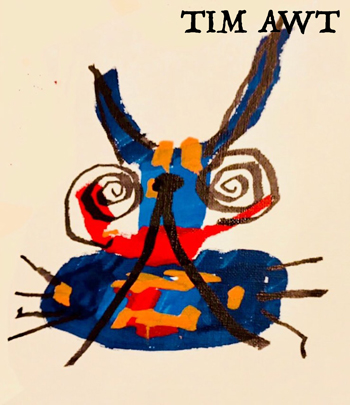 (An excerpt from The Cheeky Monkey – Writing Narrative Comedy [Currency Press])
(An excerpt from The Cheeky Monkey – Writing Narrative Comedy [Currency Press])
The most reliable stimulus for laughter is tickling. And yet even here the laughter response can be enhanced by mock-threatening behaviour.
For instance, imagine you are about to tickle a toddler. Do you simply reach out your hands and tickle? Is any part of the baby – e.g. their shoulders or scalp as ticklish as any other? Do you remain silent as you tickle? Do you tickle the same spot throughout the exercise?
Of course not. To be effective, tickling should be an unfolding drama. A popular tickling routine follows the form of the rhyme below:
Round and round the garden,
Like a teddy-bear.
One step, two step,
Tickly under there!
The routine accompanying the rhyme goes as follows:
- The tickler begins ever-so-lightly drawing circles in the victim’s palm, using a voice that us light but full of portent: “Round and round the garden, like a teddy-bear….”
- The tickler finger-steps up the victim’s arm with the delicacy and care of a stalking cat, using a tone that increases in tension in the victim: “One step… two step…”
- Finally, the tickler pounces swiftly, using misdirection to evade the victim’s defences. The tickler’s voice changes to a rapid and threatening attack: “Tickly under there!”
The tickler strikes at the armpits, neck, waist, groin, inner thighs, the back of the knees or the soles of the feet. Nowhere else on the body will reliably induce laughter. Why these points?
Our DNA got its act together when savage predators were a fact of life. An attack on the vulnerable points mentioned above would sever vital arteries, gouge essential organs or, in the case of the soles of the feet, render the victim incapable of flight. The caveman might survive without his elbows. His skull and shinbones might withstand a tiger’s jaws and he might even have a chance with a chomp out of his buttock. But a savage bite to the neck? Forget it.
When vulnerable body parts are threatened we react instinctively by moving and making noise. In the stone age this behaviour would alert fellow tribe members to the presence of danger, increasing the victim’s and the tribe’s chances of survival.
By training a child to respond to play-danger, parents are unconsciously teaching their kids to recognise their vulnerable points and respond effectively when genuinely threatened.
Narrative Comedy often features stakes that imperil characters by means of threats being. For example, Slapstick comedy is the craft’s most direct simulation of physical harm.
Like tickling, this simulation cannot trigger the fear-flight response that translates into laughter.
